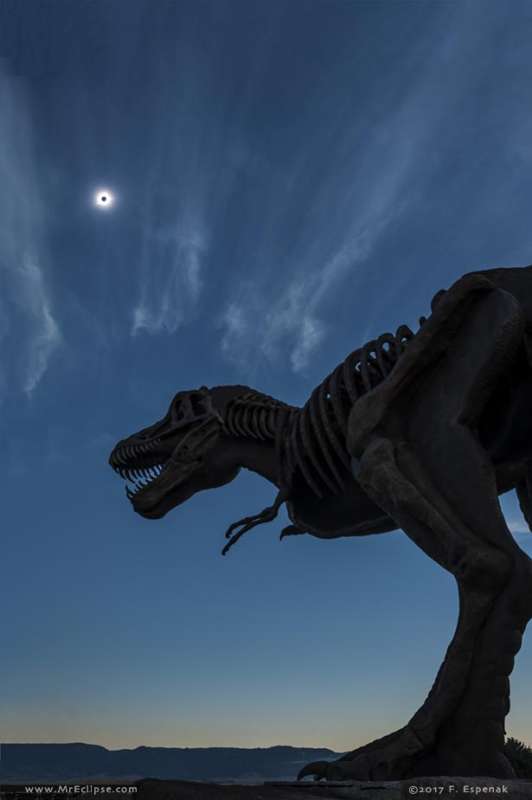
|
Credit & Copyright: Fred Espenak
(MrEclipse.com)
Explanation:
We live in an era where
total
solar eclipses are possible because at times
the apparent size of the Moon can just cover the disk of the Sun.
But the Moon is slowly moving away from planet Earth.
Its distance is
measured
to
increase
about 1.5 inches (3.8 centimeters) per year due to tidal friction.
So there will come a time, about
600 million years from
now, when the Moon is far enough away that the lunar disk will
be too small to ever completely cover the Sun.
Then, at best only annular eclipses, a ring of fire surrounding
the silhouetted disk of the too small Moon, will be seen from
the surface of our fair planet.
Of course the Moon was slightly closer and loomed a little larger
100 million years ago.
So during the age of the dinosaurs there were more frequent
total eclipses of the Sun.
In front of the
Tate
Geological Museum at Casper College in Wyoming,
this dinosaur statue posed with a
modern total eclipse, though.
An automated camera was placed under him to shoot his portrait
during the Great American Eclipse of August 21.
|
January February March April May June July August September October November December |
| |||||||||||||||||||||||||||||||||||||||||||||||||||||||
NASA Web Site Statements, Warnings, and Disclaimers
NASA Official: Jay Norris. Specific rights apply.
A service of: LHEA at NASA / GSFC
& Michigan Tech. U.
Based on Astronomy Picture
Of the Day
Publications with keywords: total solar eclipse
Publications with words: total solar eclipse
See also:
